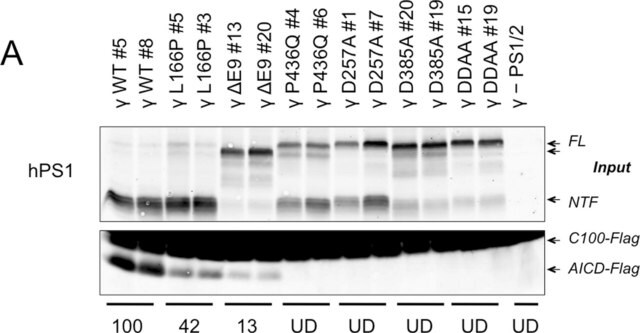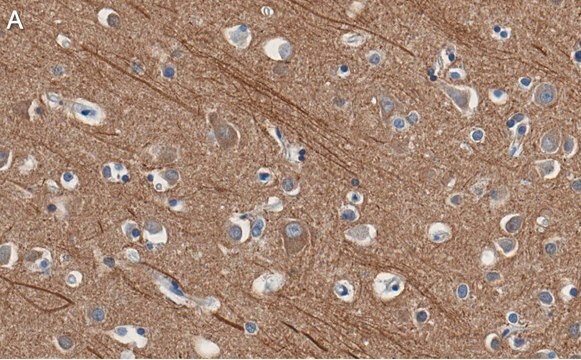MAB5232
Anti-Presenilin-1 Antibody, loop, a.a. 263-378, CT, clone PS1-loop
ascites fluid, clone PS1-loop, Chemicon®
Synonim(y):
Anty-ACNINV3, Anty-AD3, Anty-FAD, Anty-PS1, Anty-S182
About This Item
Polecane produkty
pochodzenie biologiczne
mouse
forma przeciwciała
ascites fluid
rodzaj przeciwciała
primary antibodies
klon
PS1-loop, monoclonal
reaktywność gatunkowa
rat, primate, mouse, human
producent / nazwa handlowa
Chemicon®
metody
immunocytochemistry: suitable
immunohistochemistry: suitable (paraffin)
immunoprecipitation (IP): suitable
western blot: suitable
izotyp
IgG1
numer dostępu NCBI
numer dostępu UniProt
Warunki transportu
dry ice
docelowa modyfikacja potranslacyjna
unmodified
informacje o genach
human ... PSEN1(5663)
Opis ogólny
Specyficzność
Immunogen
Zastosowanie
A previous lot of this antibody was used in IC.Acetone or methanol fixed cells; or lightly fixed 2.5-3% PFA (5-10′ RT).
Immunohistochemistry:
A previous lot was used on 3% paraformaldehyde fixed tissue. Works on paraffin embedded tissue sections if fixed with PLP, acetone or other light fixations; 10% formalin fixation is untested.
Immunoprecipitation:
A previous lot of this antibody was used in IP.
Western blot:
Recognizes a protein of approximately 18-20 kD, and occasionally there is a doublet (the top band of which is phosphorylated).
Optimal working dilutions must be determined by the end user
Neuroscience
Neurodegenerative Diseases
Jakość
Western Blot Analysis:
1:500 dilution of this lot detected PRESENILIN-1 on 10 μg of PC12 lysates.
Opis wartości docelowych
Postać fizyczna
Przechowywanie i stabilność
Handling Recommendations: Upon receipt, and prior to removing the cap, centrifuge the vial and gently mix the solution. Aliquot into microcentrifuge tubes and store at -20°C. Avoid repeated freeze/thaw cycles, which may damage IgG and affect product performance.
Komentarz do analizy
Brain tissue
Inne uwagi
Informacje prawne
Oświadczenie o zrzeczeniu się odpowiedzialności
Nie możesz znaleźć właściwego produktu?
Wypróbuj nasz Narzędzie selektora produktów.
polecane
Kod klasy składowania
10 - Combustible liquids
Klasa zagrożenia wodnego (WGK)
WGK 1
Temperatura zapłonu (°F)
Not applicable
Temperatura zapłonu (°C)
Not applicable
Certyfikaty analizy (CoA)
Poszukaj Certyfikaty analizy (CoA), wpisując numer partii/serii produktów. Numery serii i partii można znaleźć na etykiecie produktu po słowach „seria” lub „partia”.
Masz już ten produkt?
Dokumenty związane z niedawno zakupionymi produktami zostały zamieszczone w Bibliotece dokumentów.
Nasz zespół naukowców ma doświadczenie we wszystkich obszarach badań, w tym w naukach przyrodniczych, materiałoznawstwie, syntezie chemicznej, chromatografii, analityce i wielu innych dziedzinach.
Skontaktuj się z zespołem ds. pomocy technicznej








